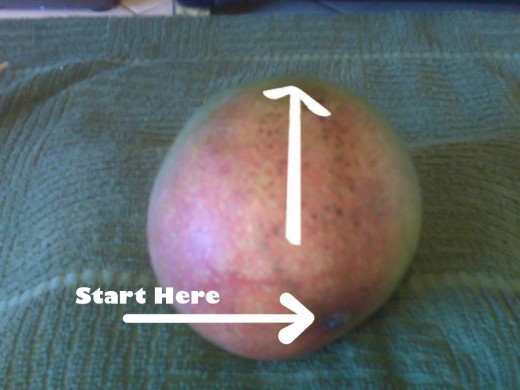Mango and Coconut Rice
Coconut Rice
Start with a white uncooked rice. As with any rice be sure to completely rinse the rice in cold water before cooking. Unlike othe rice recipes this one requires the use of coconut milk (not coconut creme) as a partial substitute for water.
I tried many times to make the coconut rice. In one method I added the sugar to the coconut milk/water; it wasn't sweet. In another I used coconut milk only; the rice didn't cook properly. This is the best method I've found to date. As with all of my posted recipes it's mainly about the method then the ingredients.
Ingredients
- 15 ounce (13.5 Milliliter) can of coconut milk. 15 ounces is slightly more than 1 1/2 Cups liquid.
- 1/2 Cup of water
- 1 Cup white rice (I prefer Thai Jasmine rice)
- 1 dash salt
- Sweetner (1/4 Cup Water and 3 to 6 Tablespoons sugar) this is optional
Directions
- Combine the coconut milk and water by stirring completely. Pour this in a pot and bring to a boil. Coconut milk alone will not produce the desired consistency in the cooked rice.
- Once the mixture is at the boil. Add the rice and bring up to a boil again. Simmer for 15 minutes (very low flame) with the pot covered. Take the rice off the flame after 15 minutes and let rest for 5 minutes before fluffing with a fork.
- To sweeten the rice mix 3 to 6 tablespoons of sugar (or an equivalent amount of your favorite sweetener) in 1/8 Cup of water. Pour the sweetener over the rice and "toss" to blend in the sweetner. Adjust for taste.
The salt is added to aid the rice's absorption of water.
You may find that the rice is sweet enough without the addition of a sweetener.
Allow the rice to cool and then transfer the rice to the refrigerator for complete cooling.
Jasmine Rice
Click thumbnail to view full-size


Choosing a Mango
Contrary to "common" food knowledge the color the mango is no indication of it's ripeness. In fact a mango can be anywhere from a deep olive green to a bright orange in color (or a combination of the two) and still be quite ripe or not ripe at all.
No, the ripeness of a mango must be determined by feel. To determine if a mango is ready to eat press into the flesh (through the skin of course) with your thumb using moderate pressure. If the fruit rebounds or cannot be pressed it is still "green."
A ripe mango can be "dented" with your thumb. The dent will be permanent if the fruit is ripe. This test works best around the circumference of the fruit, not on either end.
I like the "Mexican" mangoes as they are rounder in shape and contain more edible meat. They are also typically cheaper, yet taste exactly the same as those grown farther south or imported from the Far East.
Note that the skin of the mango is also quite strong. You are not likely to be able to press on the skin hard enough to penetrate it during the ripness test.
Where to Cut

Cutting Directions

Cutting the Mango
I strongly suggest using a very sharp knife or peeler and wear gloves when peeling this fruit. The skin of this fruit, though quite thin, is also quite strong. In fact a "sawing" motion with a sharp knife will make peeling this fruit possible if trying to use a peeler fails. The gloves are to help prevent a nasty cut as the fruit is quite slippery without it's peel.
I suggest cutting off both ends of the mango and then cutting thin strips of the "skin" away on one side of the mango at one time. Once the skin is removed from one side cut the fruit from the seed (the seed is quite large) also using a sawing motion. Leaving the skin on the opposite side will give you something to hang on to. A completely peeled mango is very slippery. If the cutting is fairly easy going you may not be getting all of the best of the meat. If the cutting is difficult and you can feel fibers being cut you are too close to the seed and will get some hard to chew fruit. Naturally finding the best places to cut takes practice. If properly cut the fruit portion will form a slight concave shape once separated from the seed.
Once you have the meat cut from the seed put it in a bowl or on a cutting board for final preparation.
A Serving

Combining the Mango and Rice
Serve the chilled coconut rice on a plate slightly mounded. Cut the mango fruit into strips or cubes and place atop the rice. By taking equal portions of rice and mango with fork you will experience a taste similar to a "dream-cicle." The mild flavor of the coconut rice and citrusy tang of the mango complement each other perfectly.
Chilled this is the "perfect" summer-time desert and quite healthy too.
Cheap Eats
All of the items above were purchased at a dollar store. This means that the entire desert described above cost less than three dollars (since only half the rice was used); total cost more like two and a half dollars.
That's a two and a half dollar recipe that will feed two to four people depending on how generous you care to be.
Of course this does not include the refrigeration or cooking costs.











